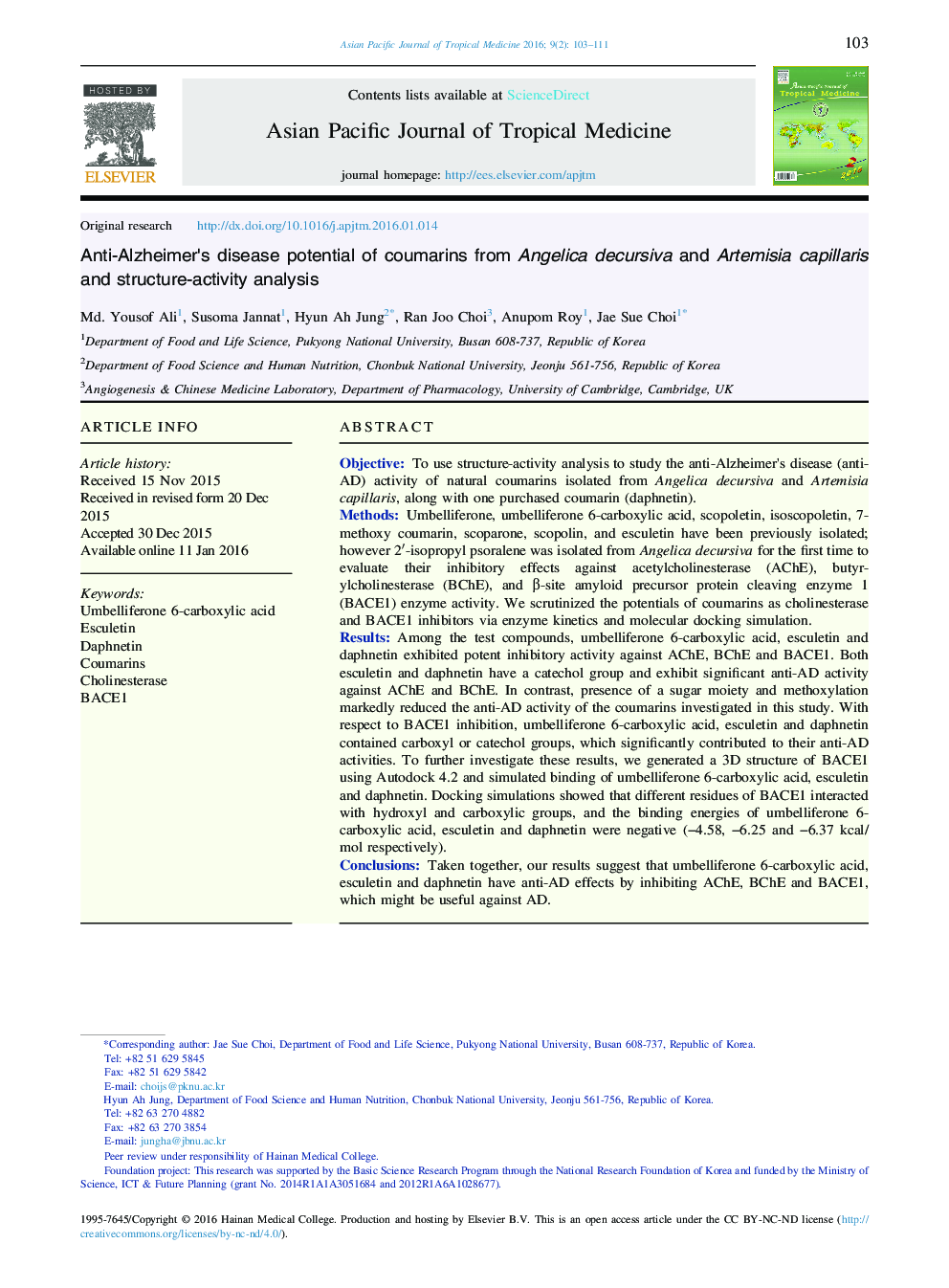| کد مقاله | کد نشریه | سال انتشار | مقاله انگلیسی | نسخه تمام متن |
|---|---|---|---|---|
| 3455237 | 1596007 | 2016 | 9 صفحه PDF | دانلود رایگان |

ObjectiveTo use structure-activity analysis to study the anti-Alzheimer's disease (anti-AD) activity of natural coumarins isolated from Angelica decursiva and Artemisia capillaris, along with one purchased coumarin (daphnetin).MethodsUmbelliferone, umbelliferone 6-carboxylic acid, scopoletin, isoscopoletin, 7-methoxy coumarin, scoparone, scopolin, and esculetin have been previously isolated; however 2′-isopropyl psoralene was isolated from Angelica decursiva for the first time to evaluate their inhibitory effects against acetylcholinesterase (AChE), butyrylcholinesterase (BChE), and β-site amyloid precursor protein cleaving enzyme 1 (BACE1) enzyme activity. We scrutinized the potentials of coumarins as cholinesterase and BACE1 inhibitors via enzyme kinetics and molecular docking simulation.ResultsAmong the test compounds, umbelliferone 6-carboxylic acid, esculetin and daphnetin exhibited potent inhibitory activity against AChE, BChE and BACE1. Both esculetin and daphnetin have a catechol group and exhibit significant anti-AD activity against AChE and BChE. In contrast, presence of a sugar moiety and methoxylation markedly reduced the anti-AD activity of the coumarins investigated in this study. With respect to BACE1 inhibition, umbelliferone 6-carboxylic acid, esculetin and daphnetin contained carboxyl or catechol groups, which significantly contributed to their anti-AD activities. To further investigate these results, we generated a 3D structure of BACE1 using Autodock 4.2 and simulated binding of umbelliferone 6-carboxylic acid, esculetin and daphnetin. Docking simulations showed that different residues of BACE1 interacted with hydroxyl and carboxylic groups, and the binding energies of umbelliferone 6-carboxylic acid, esculetin and daphnetin were negative (−4.58, −6.25 and −6.37 kcal/mol respectively).ConclusionsTaken together, our results suggest that umbelliferone 6-carboxylic acid, esculetin and daphnetin have anti-AD effects by inhibiting AChE, BChE and BACE1, which might be useful against AD.
Journal: Asian Pacific Journal of Tropical Medicine - Volume 9, Issue 2, February 2016, Pages 103–111